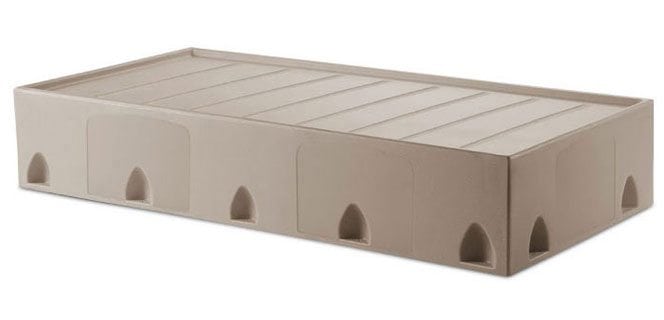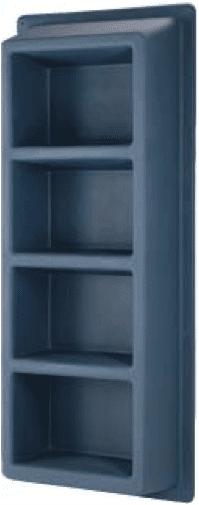Expert Advice for Furnishing High Risk Areas in Behavioral Health Facilities
Patient bedrooms in behavioral health facilities present special challenges with regard to selecting furniture and fixtures that are appropriate for high risk areas. Patients spend long periods of time alone in their bedrooms undisturbed and away from the watchful eyes of staff, visitors, or other patients.
Furniture durability is important in all patient areas, but safety concerns in such “solitude zones” like patient bedrooms, require another layer of criteria and forethought to minimize possible injury.
James Hunt, AIA, NCARB — an architect and industry consultant for facility safety –identifies potential safety hazards that may be present on standard furniture pieces and fixtures, and recommends more safety-engineered alternatives. He shared the following advice in an article published in Behavioral Healthcare magazine in 2010.
Part I: Furniture
Beds. Hunt identifies “platform beds with no storage drawers or exposed wires, springs, or restraint loops” as the best choice. Facilities can minimize the institutional look and feel of these beds by selecting the bed’s finish. Hunt suggests choosing a wood or wood-appearing finish, such as synthetic materials with a surface made to look like wood, as long as it is well-sealed and durable.
Facilities may also choose to select molded polymer beds, rather than wood, as these can be more durable (figure 1). “These have the advantage in that they … have no joints into which liquids can penetrate,” Hunt says.
Figure 1. Molded polymer platform beds are a safe and
durable choice for facilities (mattress not shown.)
Photo by Norix Group, Inc.
Whatever the bed choice, Hunt advises facilities that these beds be anchored firmly to the floor “to reduce the likelihood of patients using them to barricade” bedroom doors leading out into the corridor.
Dressers, armoires, and closets. According to Hunt, “clothes poles and hangers have been a significant issue” for patient safety for many years. Patients have commonly used these features as ligature attachment points. To reduce this risk, the Facility Guidelines Institute eliminated space for hanging clothes as a requirement for facilities, effective this year (see FGI Guidelines for the Design and Construction of Health Care Facilities, 2010 edition).
Instead, Hunt recommends a sloped, open-front cabinet with fixed, shallow shelves (figure 2). The selection of this type of product:
- Ensures that patients cannot easily sit or climb on the top of the cabinet’s sloped surface;
- Eliminates cabinet doors, which are “often used as an attachment point,” and reduces the risk of ligature;
- Reduces the risk that the secured, shallow shelves can be used for climbing or removed for use as weapons; and
- Eliminates drawers, which can also be broken, used as attachment points, or removed and used as weapons.
Figure 2. Shallow shelves and a sloped top reduce
climbing and hanging risks from shelving units.
Photo by Norix Group, Inc.
Hunt insists that, like beds, these cabinets should be securely anchored to walls or floors.
Nightstands, desks, and chairs. Because these furnishings are typically light in weight, Hunt says that facilities may need to eliminate the potential for patients to stack or throw nightstands, desks, and chairs. This can be done by anchoring them to the floor. The presence of drawers should also be eliminated by replacing them with open shelves.
For desk chairs, Hunt suggests choosing products that are lightweight plastic, as they “are not easily broken” and “do not make good weapons.”
Coming Up Next – Part II: Fixtures

